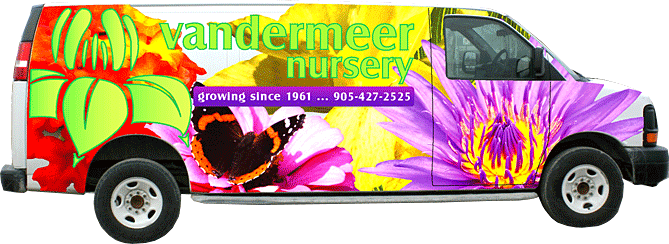VANDERMEER
PLANT LIBRARY
Find the perfect plant for your space by browsing through this extensive selection that we typically carry every year.
This library is for information purposes only.
Dinosaur Kale
Brassica oleracea var. sabellica 'Lacinato'
Height: 24 inches
Spread: 24 inches
Sunlight:
![]()
Hardiness Zone: (annual)
Other Names: Tuscan Kale, Black Leaf Kale, Black Cabbage
Description:
This heirloom variety has fantastic ornamental value, along with its culinary attributes; long, thick, pebbly textured leaves are a deep blue-green; can be massed in borders, or used as a container focal point; visually stunning and edible
Edible Qualities
Dinosaur Kale is an annual vegetable plant that is commonly grown for its edible qualities. The crinkled narrow steel blue leaves with pointy creamy white spines and tinges of bluish-green are usually harvested from early to late fall. The leaves have a pleasant taste and a crisp texture.
The leaves are most often used in the following ways:
- Fresh Eating
- Cooking
Planting & Growing
Dinosaur Kale will grow to be about 24 inches tall at maturity, with a spread of 24 inches. This fast-growing vegetable plant is an annual, which means that it will grow for one season in your garden and then die after producing a crop.
This plant is typically grown in a designated vegetable garden. It should only be grown in full sunlight. It requires an evenly moist well-drained soil for optimal growth, but will die in standing water. It is not particular as to soil pH, but grows best in rich soils. It is somewhat tolerant of urban pollution. Consider applying a thick mulch around the root zone over the growing season to conserve soil moisture. This is a selected variety of a species not originally from North America, and it is considered by many to be an heirloom variety.
Dinosaur Kale is a good choice for the vegetable garden, but it is also well-suited for use in outdoor pots and containers. It can be used either as 'filler' or as a 'thriller' in the 'spiller-thriller-filler' container combination, depending on the height and form of the other plants used in the container planting. It is even sizeable enough that it can be grown alone in a suitable container. Note that when growing plants in outdoor containers and baskets, they may require more frequent waterings than they would in the yard or garden.






